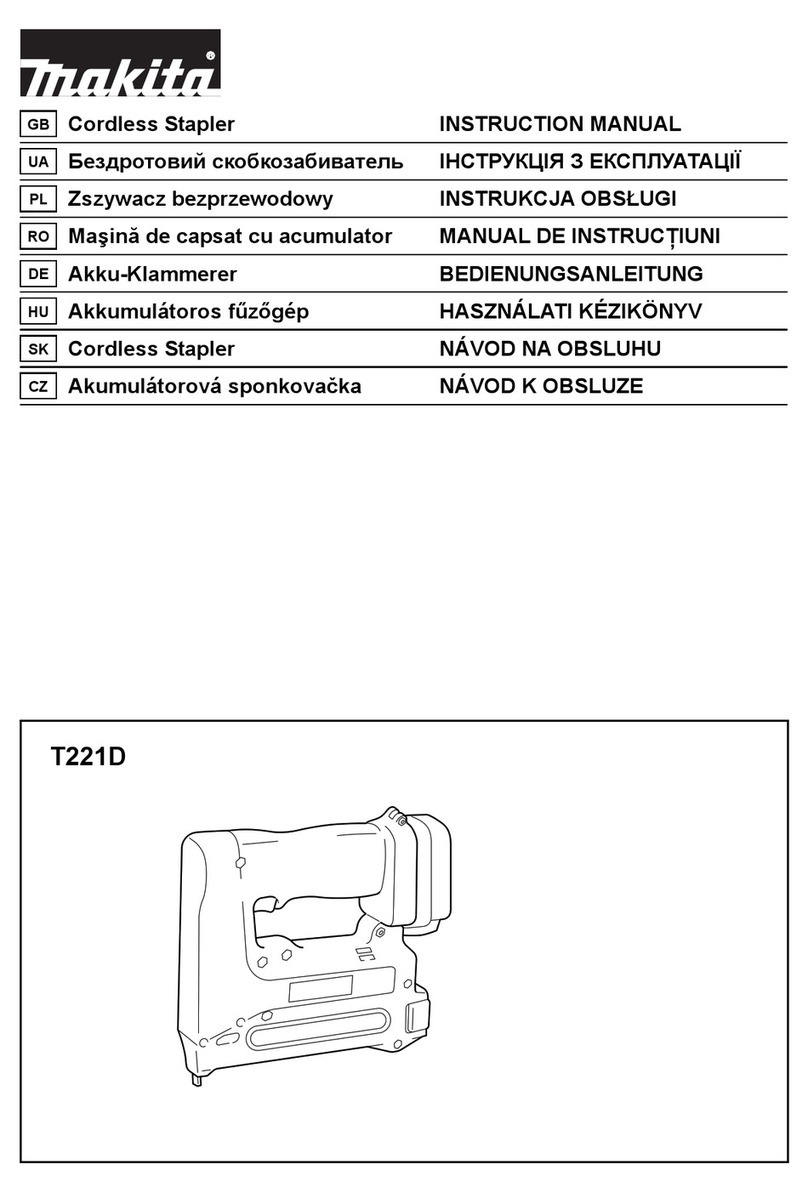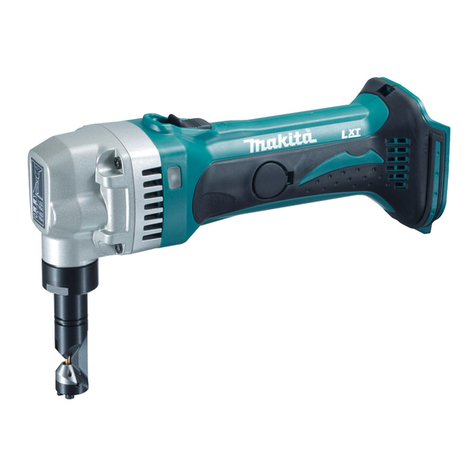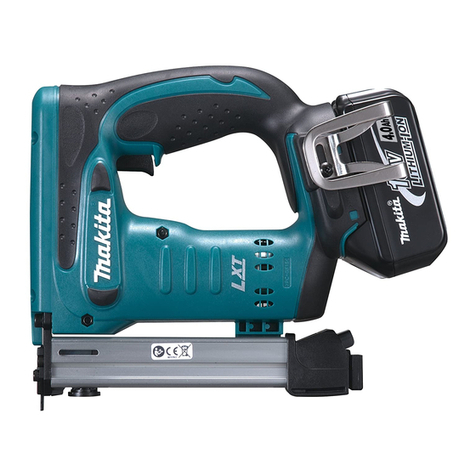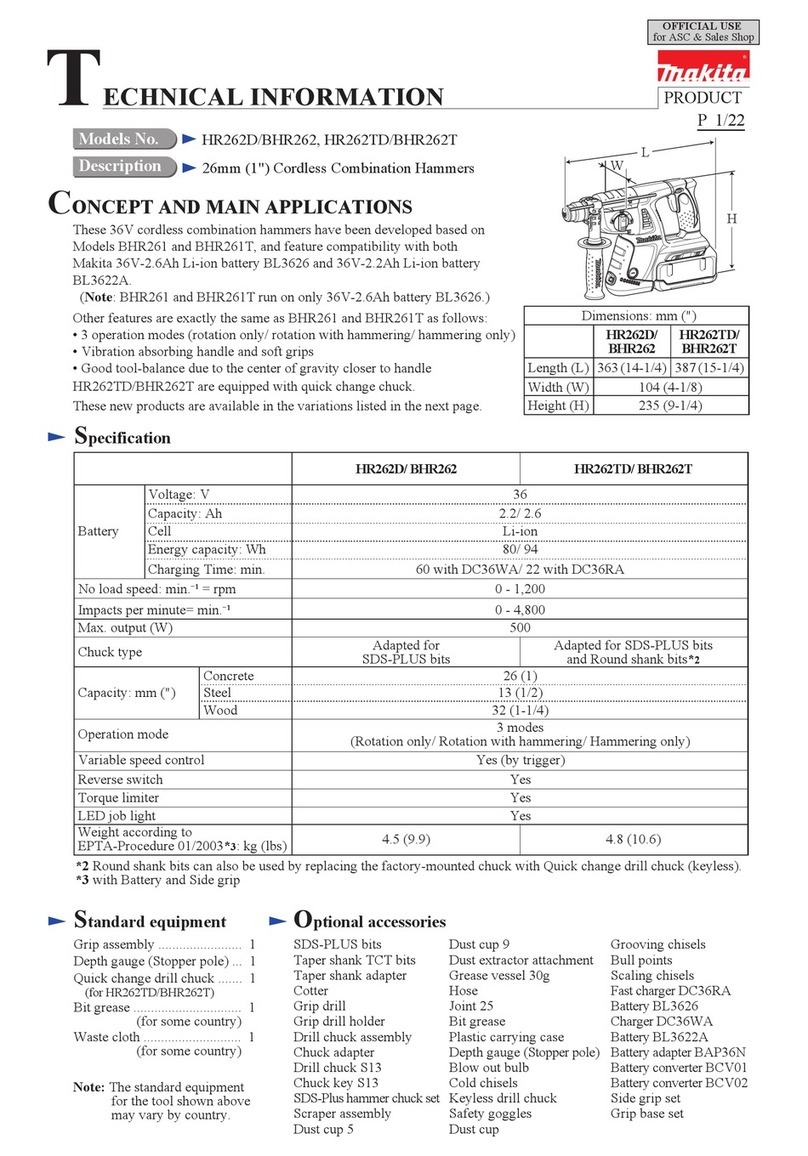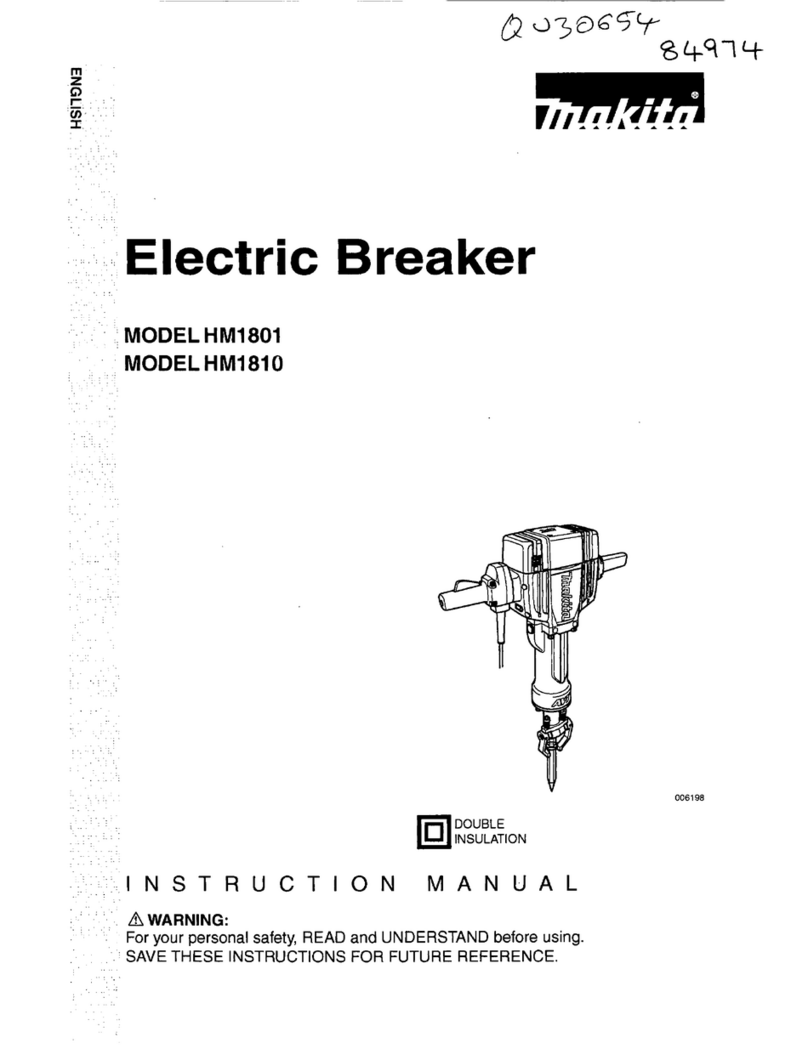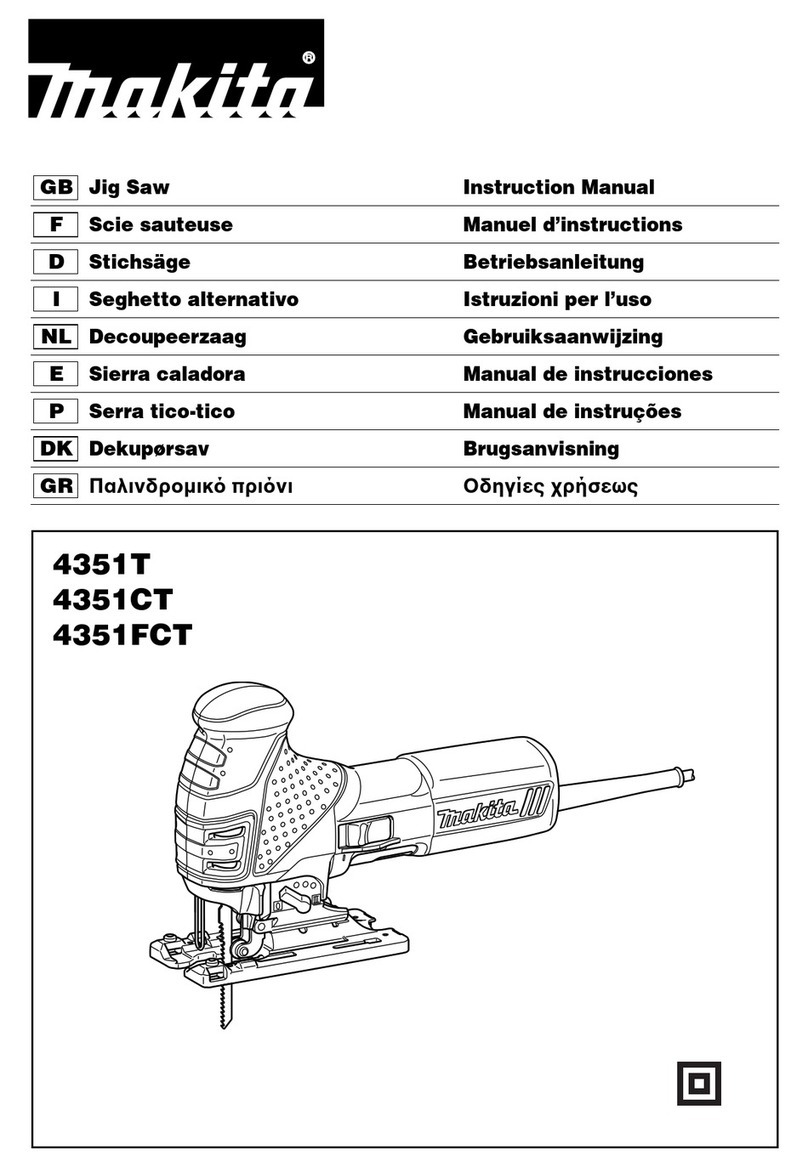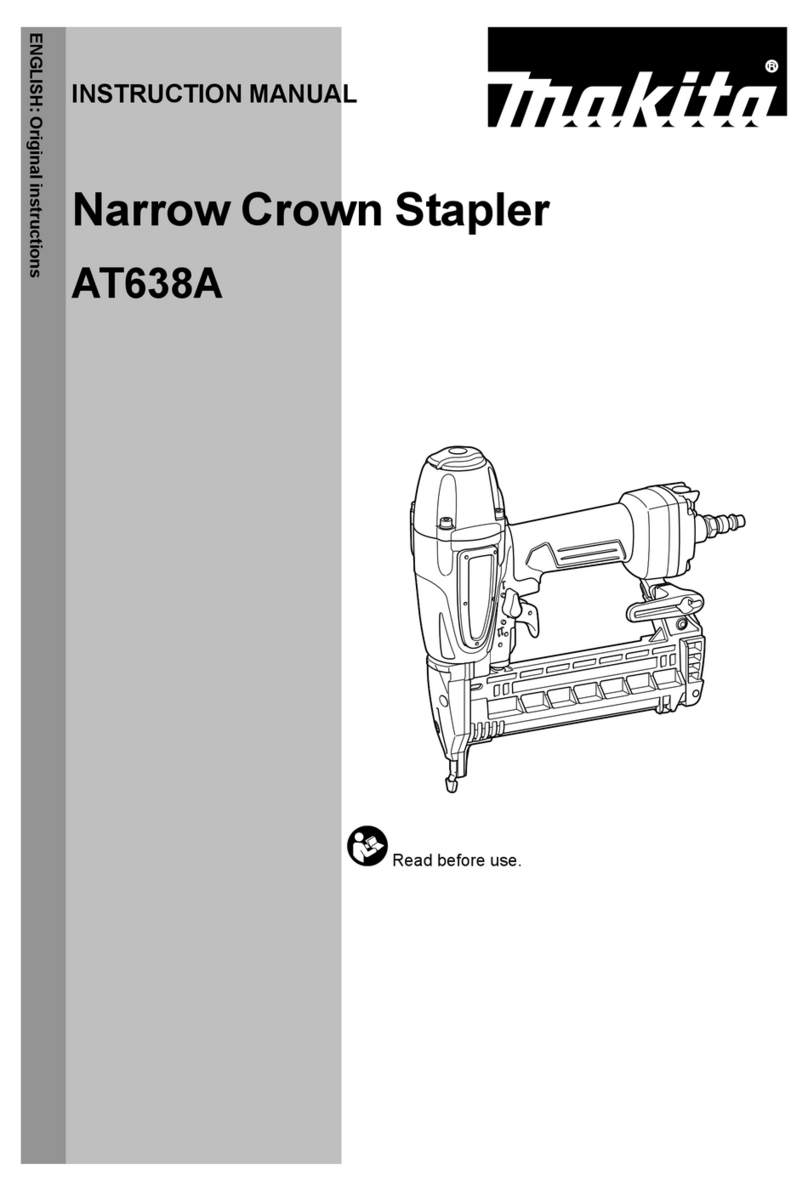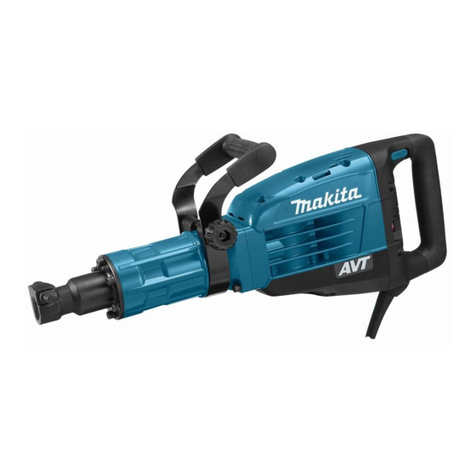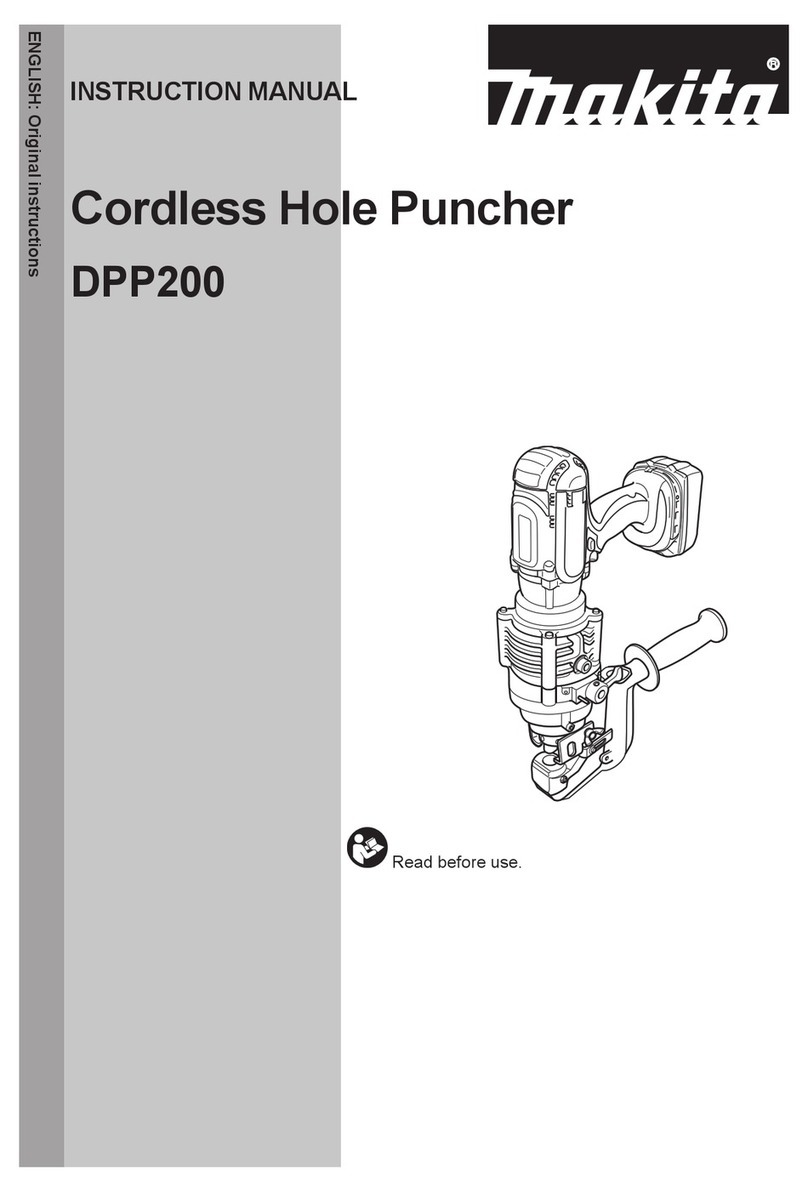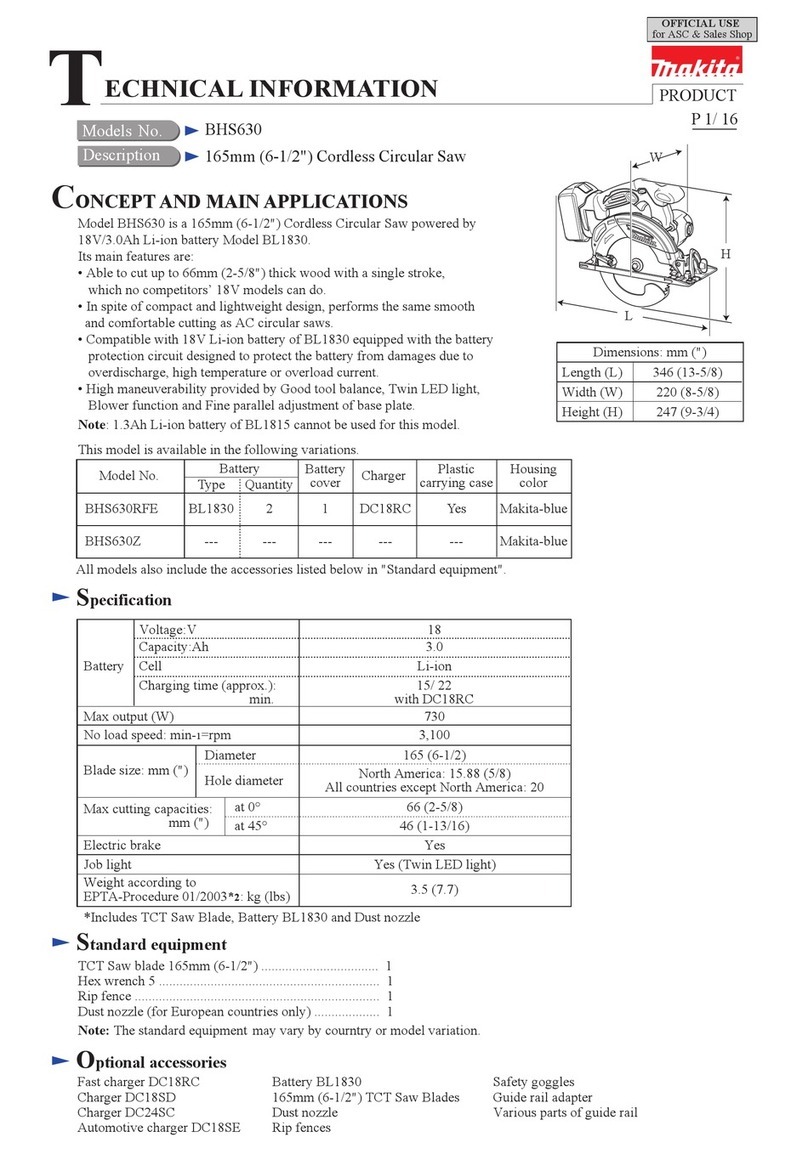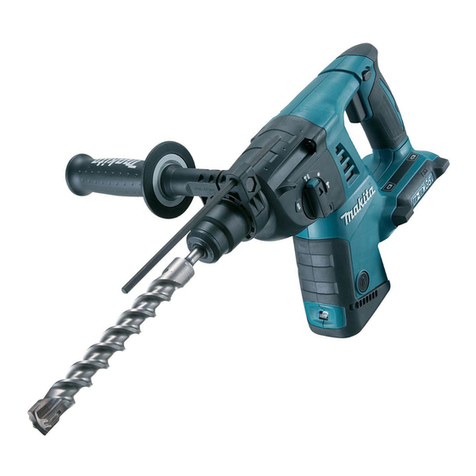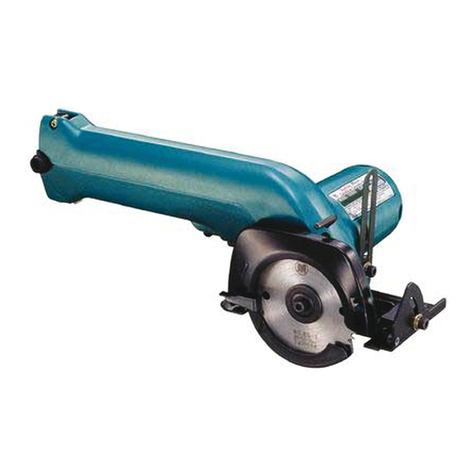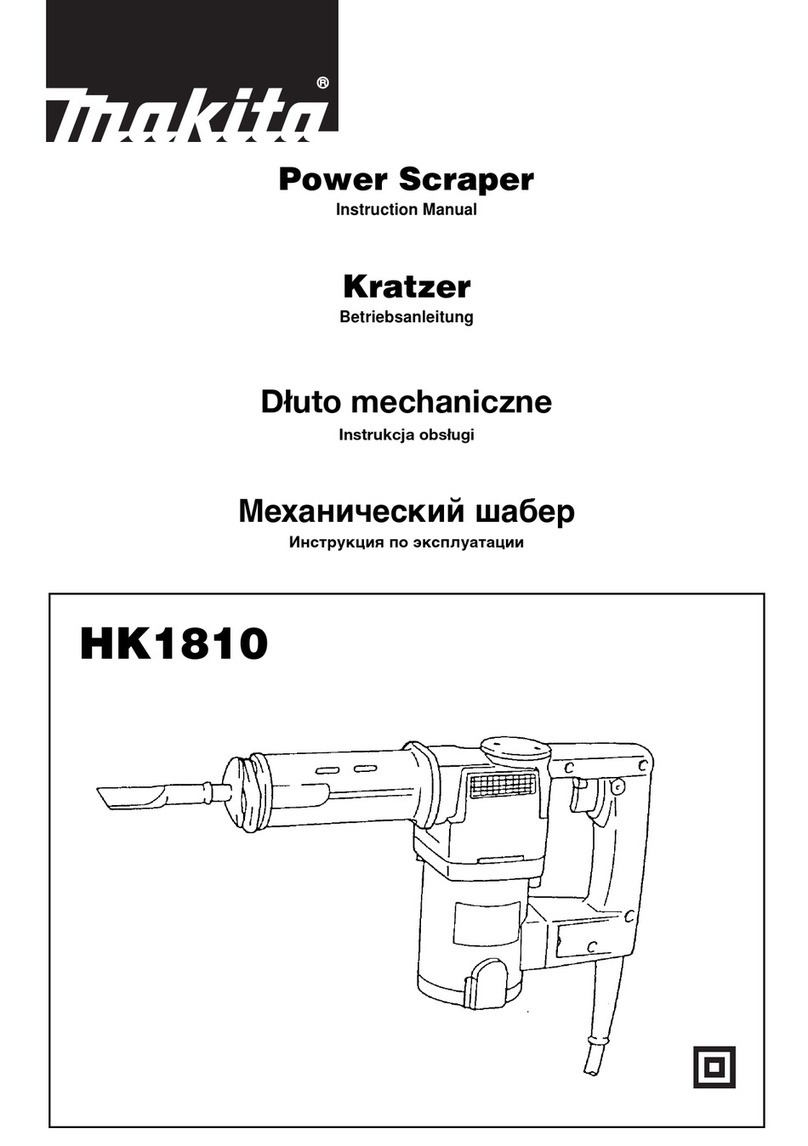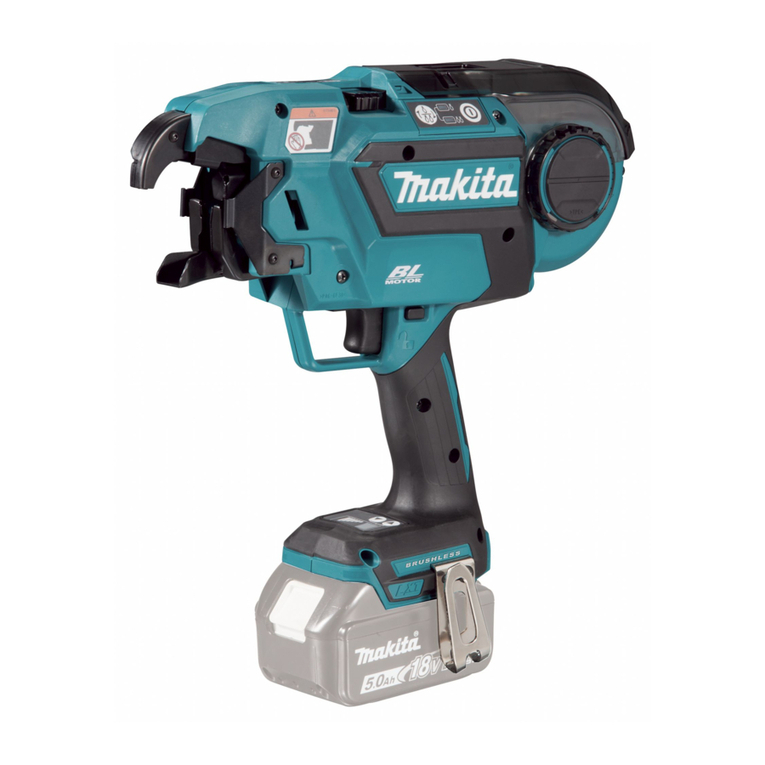5ENGLISH
Battery tool use and care
1. Recharge only with the charger specied by
the manufacturer. A charger that is suitable for
onetypeofbatterypackmaycreateariskofre
when used with another battery pack.
2. Use power tools only with specically desig-
nated battery packs. Use of any other battery
packsmaycreateariskofinjuryandre.
3. When battery pack is not in use, keep it away
from other metal objects, like paper clips,
coins, keys, nails, screws or other small metal
objects, that can make a connection from one
terminal to another. Shorting the battery termi-
nalstogethermaycauseburnsorare.
4.
Under abusive conditions, liquid may be ejected
from the battery; avoid contact. If contact acci-
dentally occurs, ush with water. If liquid con-
tacts eyes, additionally seek medical help. Liquid
ejectedfromthebatterymaycauseirritationorburns.
5. Do not use a battery pack or tool that is dam-
aged or modied.Damagedormodiedbatteries
may exhibit unpredictable behaviour resulting in
re,explosionorriskofinjury.
6. Do not expose a battery pack or tool to re or
excessive temperature.Exposuretoreortem-
perature above 130 °C may cause explosion.
7. Follow all charging instructions and do not
charge the battery pack or tool outside the
temperature range specied in the instruc-
tions. Charging improperly or at temperatures
outsidethespeciedrangemaydamagethe
batteryandincreasetheriskofre.
Service
1. Have your power tool serviced by a qualied
repair person using only identical replacement
parts. This will ensure that the safety of the power
tool is maintained.
2. Never service damaged battery packs. Service
of battery packs should only be performed by the
manufacturer or authorized service providers.
3. Follow instruction for lubricating and chang-
ing accessories.
Cordless rebar tying tool safety
warnings
1.
Never point the tool toward a person. Never put
your hands or feet close to the tool tip. If you
accidentally operate the tool while it is touching
someone, it will lead to an unexpected accident.
2. Do not load wire while the power to the tool is
turned on. Otherwise, you may get caught in the
wireandinjured.
3. Do not use the tool without closing the reel
cover. Otherwise, the wire reel may come off and
cause an accident.
4. Be sure to check that the diameters of rebars
to be tied are within the tool capacity before
beginning work.
5. Wear clothes that have close-tting hemlines
and sleeves. Do not work with a towel or other
object wrapped around your neck. Otherwise,
they may get caught in the rotating part and cause
an accident.
6. Be sure to inspect the following points before
using the tool.
• Check that no parts are damaged
• Check that no bolts are loose
• Check that safety devices operate
normally
7. If any abnormalities are found, stop using the
tool immediately. Do not repair the tool by
yourself. Ask your local Makita Service Center
for repairs. If the tool is used in an incomplete
state, an accident may occur.
8. When installing the battery cartridge, be sure
to lock the trigger and do not place your nger
on the trigger. Incorrect operation may cause an
accident.
9. When tying rebars, exercise care not to move
them. If rebars move due to tying, you may be
injured.
10. Do not touch the wires during the wire tying
process. Otherwise, you may get caught in the
wireandinjured.
11. Do not bring your hands close to the tying
point during the wire tying process. Otherwise,
youmaygetcaughtinthewireandinjured.
12. Hold the grip of the tool rmly during the wire
tying process. Otherwise, your wrist may be
twisted or your body may be pulled, which may
resultinaninjury.
13. Do not move to the next tying point until the
current wire tying process is completed.
Otherwise,youmaybeinjured.
14. Pay attention to the end of the wire during the
wire tying process. Otherwise, your hand may
be caught by the end of the wire, and you may be
injured.
15. Do not touch the contact plate during the wire
tying process. If you need to touch the contact
plate, be sure to lock the trigger, or turn the
power switch off and remove the battery car-
tridge.Otherwise,youmaybeinjured.
16. When you have completed the wire tying pro-
cess, pull the tool up vertically. Otherwise, the
arm may be caught on rebars, which may cause
an accident.
17. Be careful not to drop, bump, or hit the tool.
If a strong impact is applied prior to the tool
being used, make sure that the tool is not dam-
aged or cracked, and that the safety devices
operate normally. Otherwise, an accident may
occur.
18. If any of the following phenomena occur, lock
the trigger, turn the power switch off, and
remove the battery cartridge from the tool.
If the tool operates incorrectly, an accident may
occur.
• If an operating sound is heard as soon as
the battery cartridge is mounted.
• If overheating or abnormal smells or
noises are detected.
• When you are taking measures in
response to the error display. (Ask your
local Makita Service Center for repairs.)
• When loading or unloading a wire reel.
